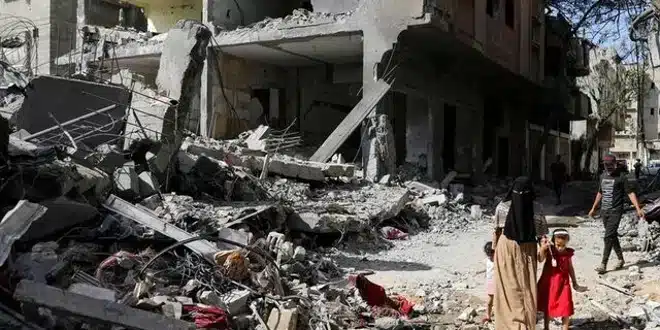Hamas announced on Tuesday that it had provided mediators with its response to the U.S.-backed cease-fire proposal for Gaza, seeking some “amendments” to the deal. While this response fell short of an outright acceptance, it kept negotiations alive for a potential end to the eight-month conflict.
The foreign ministries of Qatar and Egypt, who have been key mediators alongside the United States, confirmed receipt of Hamas’ response and are currently reviewing it.
White House national security spokesman John Kirby stated, “We have received Hamas’ reply through Qatar and Egypt and are evaluating it now.”
Hamas spokesman Jihad Taha mentioned that the response included “amendments that ensure the cease-fire, withdrawal, reconstruction, and prisoner exchange,” but did not provide further details.
Despite supporting the general framework of the deal, Hamas officials have expressed concerns about whether Israel would uphold its end, particularly regarding a permanent cease-fire and full withdrawal from Gaza in exchange for the release of all hostages held by the militants.
While the U.S. has indicated that Israel has accepted the proposal, Israeli Prime Minister Benjamin Netanyahu has given mixed signals, insisting that Israel will not cease operations until Hamas is destroyed.
U.S. Secretary of State Antony Blinken, currently in the region to push for the deal, has made his eighth visit since the conflict began following Hamas’ October 7 attack on southern Israel. Blinken emphasized the global support for the plan, highlighted by the U.N. Security Council’s vote in favor of it.
“Everyone’s vote is in, except for one vote, and that’s Hamas,” Blinken said in Tel Aviv after meeting with Israeli officials, reiterating Netanyahu’s commitment to the proposal.
In a joint statement with Islamic Jihad, Hamas expressed a willingness to reach an agreement and emphasized their goal of ending the war. Senior Hamas official Osama Hamdan confirmed they had submitted remarks on the proposal to mediators.
The proposed cease-fire aims to end an eight-month conflict that has resulted in over 37,000 Palestinian deaths and significant displacement. Israeli restrictions and ongoing fighting have impeded humanitarian aid to Gaza, causing widespread hunger.
Israel launched its campaign after Hamas and other militants attacked on October 7, killing approximately 1,200 people and taking around 250 hostages. Over 100 hostages were released during a previous cease-fire last year in exchange for Palestinian prisoners.
Later on Tuesday, Blinken attended a Gaza aid conference in Jordan, announcing over $400 million in additional aid, raising the total U.S. assistance to more than $674 million over eight months.
U.N. Secretary-General António Guterres highlighted the reduction in aid to Gaza since Israel’s offensive began in early May, calling for the opening of all border crossings.
In separate news, the U.N. human rights office reported potential war crimes committed by Israeli forces and Palestinian militants during a recent Israeli raid that rescued four hostages, killing at least 274 Palestinians.
Blinken is expected to continue discussions in Qatar, focusing on the next steps for the cease-fire proposal.
On Monday, the U.N. Security Council overwhelmingly approved the proposal, with 14 members voting in favor and Russia abstaining. The resolution urges Israel and Hamas to fully implement the terms without delay.
President Joe Biden’s proposed plan includes a three-phase approach: a six-week cease-fire with the release of some hostages in exchange for Palestinian prisoners, a full withdrawal of Israeli forces from Gaza, and extensive humanitarian aid. The subsequent phases aim for a permanent end to hostilities and a comprehensive reconstruction plan for Gaza.
While Hamas had previously embraced a similar proposal rejected by Israel, Netanyahu’s far-right coalition allies oppose the current plan, threatening to collapse the government if the war ends without Hamas’ destruction. Despite this, Netanyahu faces increasing pressure to secure the release of hostages, with widespread demonstrations in Israel supporting the U.S.-backed plan.
The transition from the first to the second phase remains contentious, with Hamas seeking assurances against resumption of hostilities and Israel wanting to avoid indefinite cease-fire negotiations while hostages remain captive.
Blinken emphasized that the proposal includes an immediate cease-fire and commitments to negotiate a lasting peace. “The cease-fire that would take place immediately would remain in place, which is manifestly good for everyone. And then we’ll have to see,” Blinken concluded.


